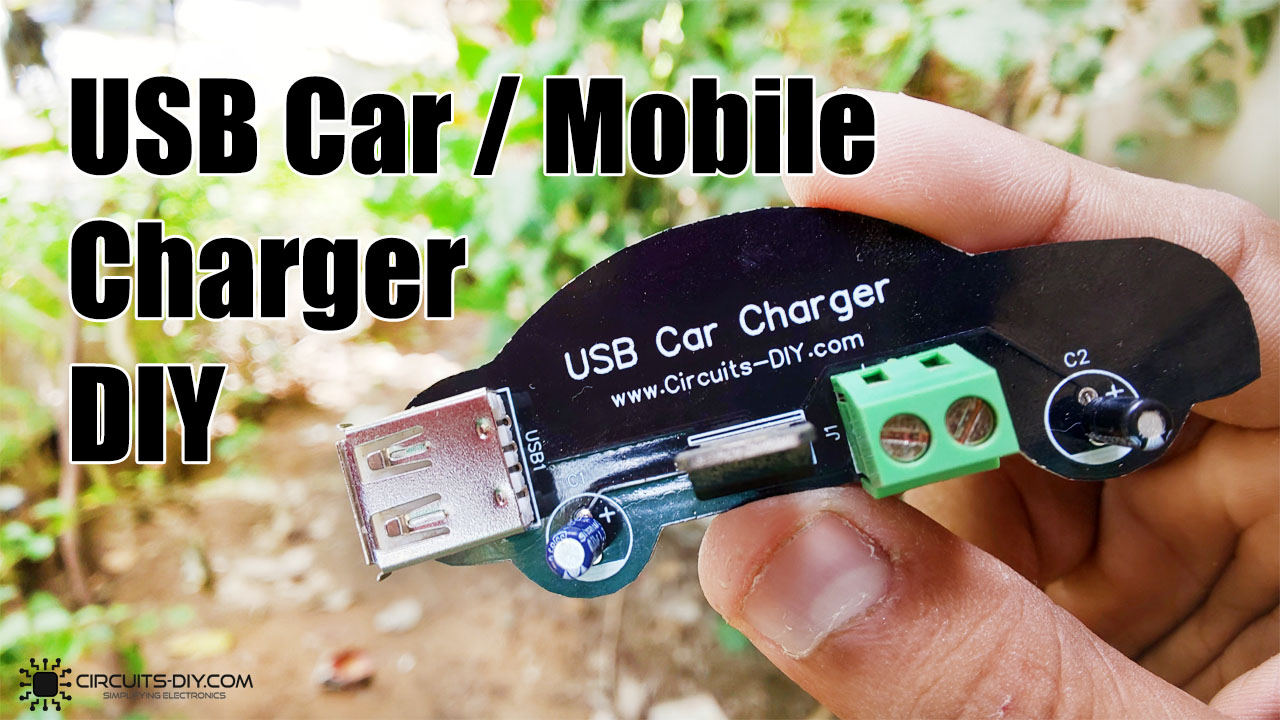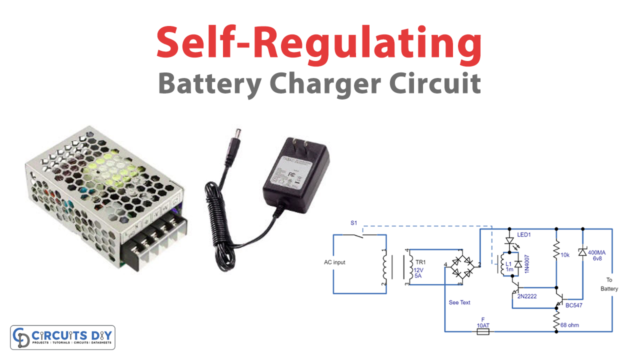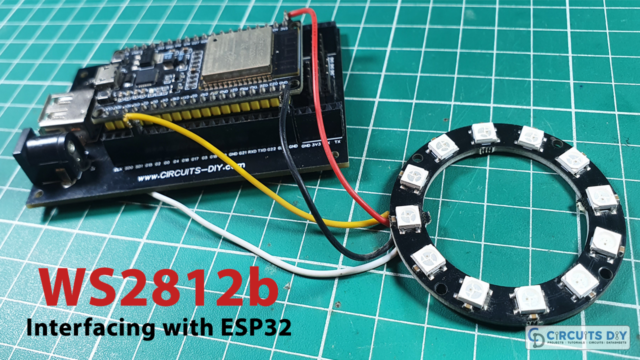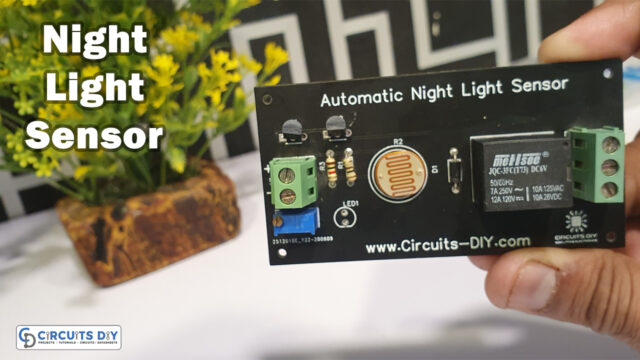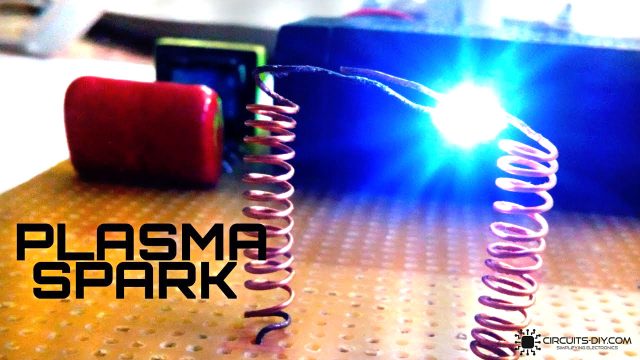Introduction
Imagine you’re traveling in your car by using the maps on your mobile phone and suddenly the battery of your phone get died. Now, you have neither an electrical socket for charging nor the maps to travel. Hence this situation is difficult to handle and makes you concerned and questionable. But, every problem arises with its solution. So is it possible that there is no answer to your question? And, the answer is hidden in your own car. Yes!! you can charge the mobile device in your own car. You just need a little electronic knowledge. So, in this tutorial, we are making a 5 Volt USB Mobile / Car Charger using LM7805 – DIY Project
Remember that the voltage of the car can vary considerably which can create spikes and surges. Therefore, to protect the charger, you must have to be aware. Because this can also create damage to the mobile device. However, it helps the device to get charged faster.
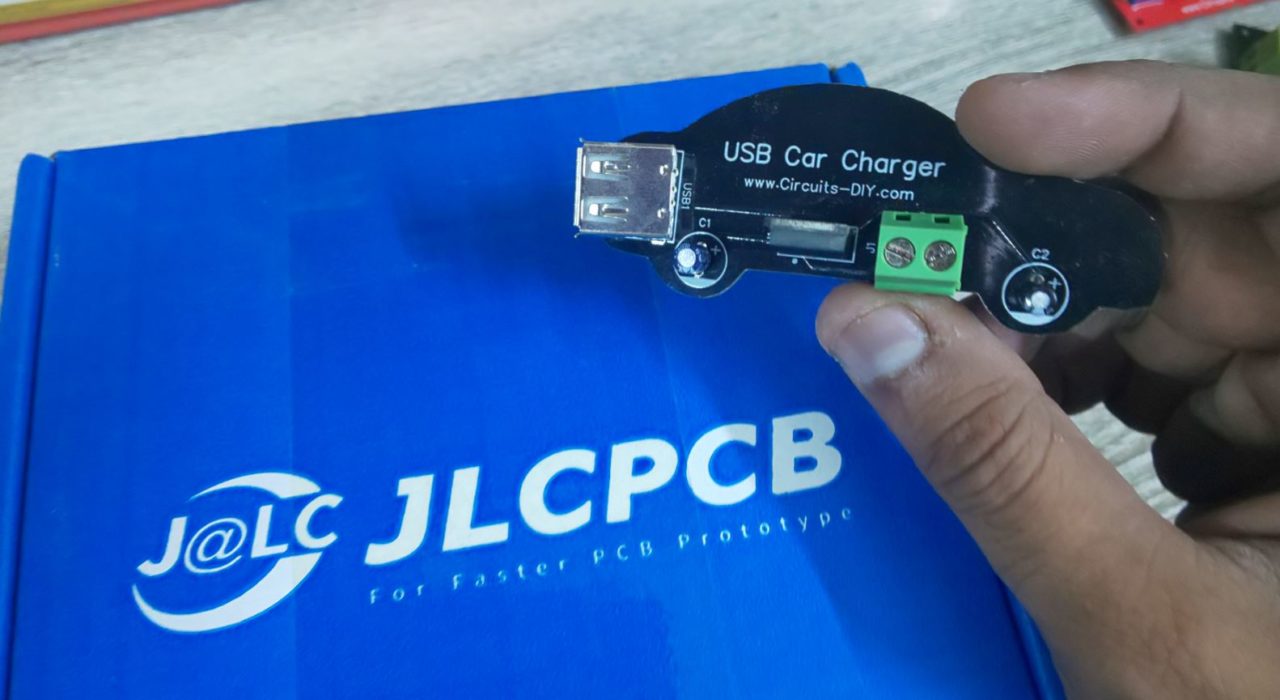
JLCPCB is the foremost PCB prototype & manufacturing company in china, providing us with the best service we have ever experienced regarding (Quality, Price Service & Time).
Hardware Components
The following components are required to make USB Car Charger Circuit
| S. No | Component | Value | Qty |
|---|---|---|---|
| 1. | PCB | – | 1 |
| 2. | Car Battery | 12V | 1 |
| 3. | Regulator IC | LM7805 | 1 |
| 4. | Electrolyte Capacitor | 0.33uf, 0.1uf | 1, 1 |
| 5. | USB port Terminal | – | 1 |
| 6. | 2 input port terminal | – | 1 |
LM7805 Pinout
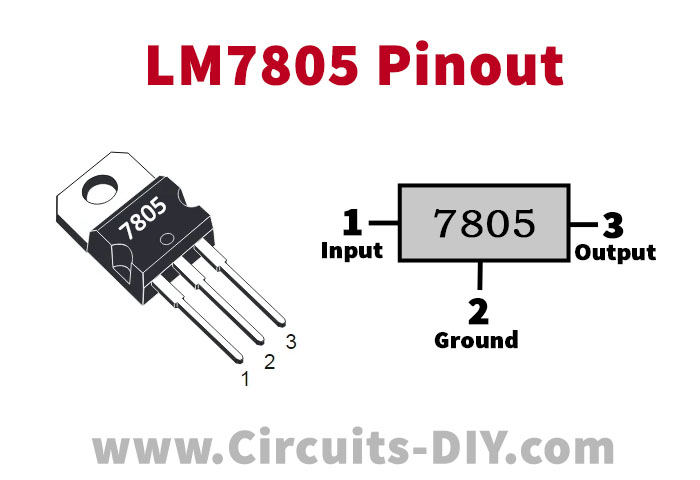
For a detailed description of pinout, dimension features, and specifications download the datasheet of 7805
USB Car Charger Circuit
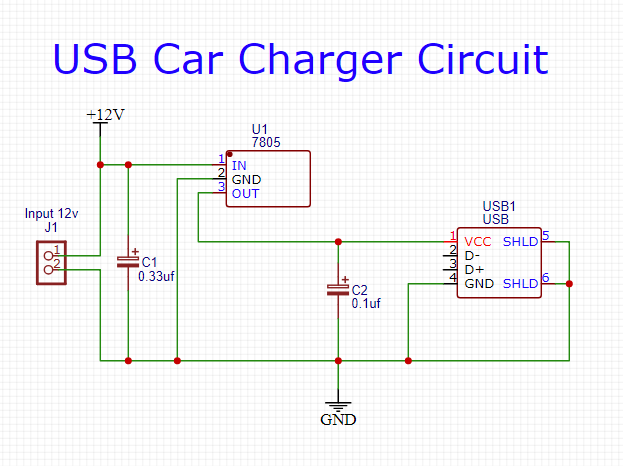
How does the Circuit work?
Firstly, make the circuit according to the diagram given. For understanding, watch the video tutorial by clicking the below-given link.
The circuit of the car charger uses the LM7805 voltage regulator IC. The Three terminal IC accepts the car battery voltage and regulates it to 5 volts. The regulator works greatly against the voltage fluctuations that may happen due to the battery connected to the circuit. Then it provides the 5V voltage to the USB port where the mobile phone is already connected. Hence the charging gets started. Before connecting the device make sure to check through the multimeter that the circuit is providing 5V.
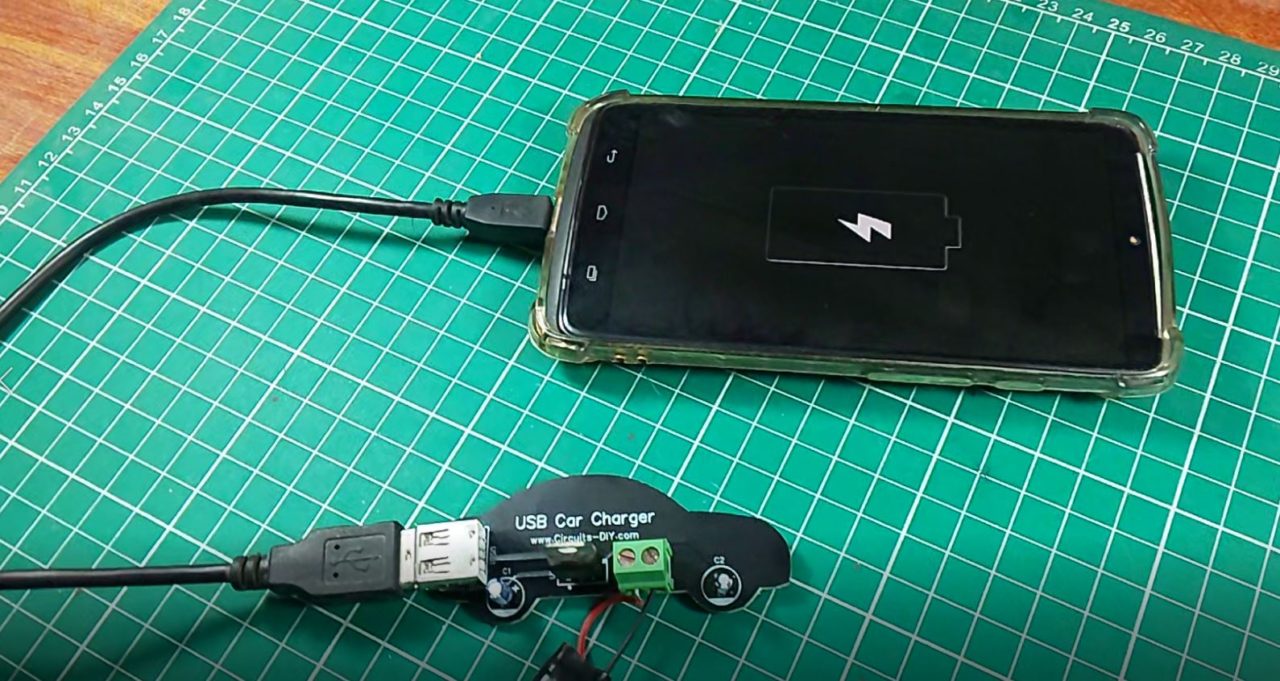
Application and Uses
This circuit can be used to charge various numbers of electronic devices like smartphones, tablets, etc.


